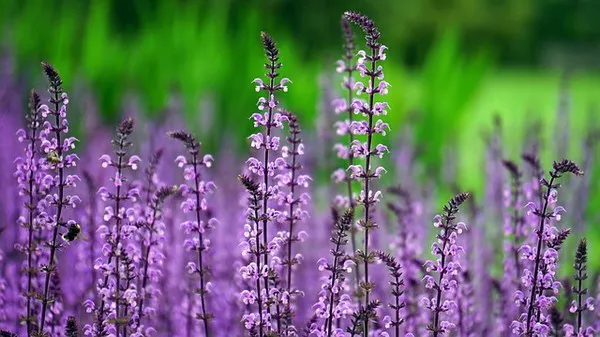In our interconnected ecosystem, pollinators play a crucial role in supporting biodiversity and maintaining the delicate balance of nature. As we become increasingly aware of the decline in pollinator populations, the importance of cultivating pollinator-friendly gardens has gained prominence. Selecting the right flowers is essential in creating a welcoming environment for bees, butterflies, hummingbirds, and other pollinators. In this article, we will explore the best flowers for pollinators, helping you transform your garden into a haven for these essential creatures.
Native Plants: A Foundation for Pollinator-Friendly Gardens
One of the most effective ways to attract pollinators to your garden is by incorporating native plants. Native flowers have evolved alongside local pollinators, making them well-suited for each other. These plants provide familiar nectar and pollen sources, ensuring a steady supply of food for bees, butterflies, and other pollinators.
Examples of native plants include:
Milkweed (Asclepias spp.): Essential for monarch butterflies, milkweed serves as both a nectar source and a host plant for their larvae.
Purple Coneflower (Echinacea purpurea): A favorite of bees and butterflies, this perennial blooms throughout the summer, providing a consistent food source.
Goldenrod (Solidago spp.): Often unfairly associated with allergies, goldenrod is a valuable late-season nectar source for pollinators.
By choosing native plants, you not only support local biodiversity but also create a sustainable and low-maintenance garden.
Diversity in Bloom Time
To ensure a year-round food supply for pollinators, it’s crucial to select flowers that bloom at different times. A garden with a variety of blooming periods provides a continuous source of nectar and pollen throughout the seasons, supporting pollinators during their entire life cycle.
Consider incorporating the following flowers with diverse bloom times:
- Spring Blooms: Crocus, Daffodils, and Lungwort
- Summer Blooms: Bee balm (Monarda), Lavender, and Catmint
- Fall Blooms: Asters, Sedum, and Goldenrod
This strategic planning ensures a consistent and varied diet for pollinators, promoting their health and overall well-being.
Colorful Allure: Attracting Pollinators with Vibrant Hues
The color of flowers plays a significant role in attracting pollinators. Different pollinators are drawn to specific colors, and by incorporating a diverse range of hues, you can attract a variety of beneficial insects.
Bees: Bees are particularly attracted to blue, purple, and yellow flowers. Plants like Lavender, Salvia, and Sunflowers are irresistible to these essential pollinators.
Butterflies: Butterflies, on the other hand, are often drawn to red, orange, and pink blooms. Consider adding Butterfly Bush (Buddleia), Zinnias, and Coreopsis to your garden.
Hummingbirds: Hummingbirds are highly attracted to red and tubular-shaped flowers. Incorporate Trumpet Vine, Cardinal Flower, and Bee Balm to entice these agile pollinators.
By selecting flowers with a spectrum of colors, you create an inviting and visually appealing environment that caters to a broad range of pollinators.
Fragrance and Nectar Accessibility
In addition to color, the fragrance of flowers can significantly impact their appeal to pollinators. Many pollinators, especially bees and butterflies, rely on scent to locate suitable nectar sources. Fragrant flowers not only attract pollinators but also enhance the overall sensory experience of your garden.
Examples of fragrant flowers for pollinators include:
Lilac (Syringa spp.): Known for its sweet fragrance, lilac attracts butterflies and bees alike.
Jasmine (Jasminum spp.): A favorite of bees and hummingbirds, jasmine’s sweet scent adds a delightful aroma to the garden.
Lavender (Lavandula spp.): Loved by bees, butterflies, and even humans, lavender offers a fragrant haven for pollinators.
Moreover, ensuring easy access to nectar is essential. Choose flowers with open, accessible blooms to accommodate the feeding habits of various pollinators, including butterflies with long proboscises and bees with shorter mouthparts.
See Also What Are The Types Of Non Flowering Plants
Conclusion
Creating a pollinator-friendly garden is a rewarding endeavor that contributes to the well-being of our planet. By carefully selecting the best flowers for pollinators, you can transform your outdoor space into a vibrant sanctuary that supports biodiversity. Native plants, diverse bloom times, colorful allure, and fragrant accessibility are all essential considerations when planning a garden that not only beautifies your surroundings but also plays a crucial role in preserving our natural ecosystems. Embrace the power of pollinator-friendly gardening and make a positive impact on the environment.


